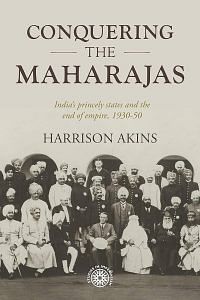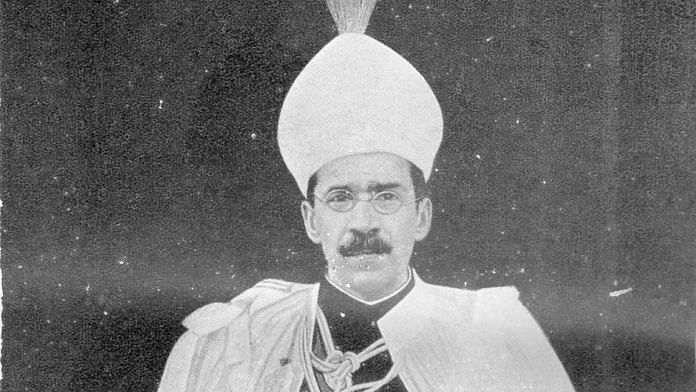Alongside Jammu and Kashmir, the princely state of Hyderabad would pose one of the most serious challenges to the early territorial and political integrity of the Indian Union. Hyderabad stretched over 83,000 square miles across the Deccan Plateau of central India and served as a vital geographical and cultural link between the north and south.
It had a population of over sixteen million people with a largely self-sufficient, exporting economy (though reliant on fuel imports from British India), all of which contributed to the belief of Hyderabad’s autocratic ruler, known as the Nizam, that the state had the ability to maintain an independent existence after the lapse of paramountcy. Not only would this fly in the face of the Indian government’s sovereign claims, but, with Hyderabad’s strategic position, India’s political leadership feared that allowing the princely state to assert its independence would sever the link between northern and southern India. This would further open the possibility of an independent Hyderabad allying itself with governments hostile to India, such as Pakistan, and weaken the overall internal security of the country. Patel described such a scenario as a ‘cancer in the belly of India.’
Following the transfer of power, the Nizam, backed by the Islamic group Majlis-e-Ittihad-ul-Muslimeen, refused to sign the Instrument of Accession in a bid to preserve his sovereignty in the face of opposition from both the Indian government and many of his subjects, including the Hyderabad State Congress. For just over a year, the princely state remained essentially an independent state in the heart of India. Despite the prolonged negotiations, New Delhi and Hyderabad were unable to find a compromise over their competing conceptions of state sovereignty.
In September 1948, as law and order deteriorated within the princely state, the Indian government finally resorted to force to resolve the dispute, launching a military invasion of the state known as Operation Polo that secured control of the state and overthrew the Nizam’s rule within a span of only four days. By the following year, Hyderabad was fully integrated into the Indian Union, ending over two centuries of princely rule.
Given its size, wealth and status, Hyderabad held a unique position among India’s princely states, with one British official referring to the state as ‘a living fragment of Moghul grandeur.’ Its roots date back to 1712 when the Asaf Jahi dynasty was established as a vassal state of the Mughal Empire. Beginning in 1759, its rulers signed a series of primarily military and mutual defense treaties with the East India Company; the first British Resident was appointed in 1779. In an 1803 treaty, the British provided guarantees for the recognition of Hyderabad’s sovereignty.
In return, the Nizam promised his loyalty to the British cause. During the 1857 uprising, the princely state did not offer any support to the rebelling sepoys, a position which earned the Nizam at the time the hereditary moniker ‘Faithful Ally’ from the British government.
The princely state would again offer its support to the British war effort during the First World War by contributing around one hundred million dollars in cash and supplies and deploying Hyderabadi army units. At the request of the British, Hyderabad’s government also issued a formal proclamation against the Ottoman sultan’s November 1914 fatwa calling for a holy war against the United Kingdom and its allies, and urged his fellow Muslims to fight for the Allied forces. In the years before independence, Hyderabad was looked on as the main pillar of Islam in India, with British authorities seeking to cultivate the Nizam’s continued support.
In the final years of the British Raj, Hyderabad was also noteworthy for the personal wealth and character of its seventh and final Nizam, Mir Osman Ali Khan, who ascended to the throne in 1911 at the age of 25. In February 1937, a portrait of Mir Osman was featured on the cover of Time magazine with the tagline ‘The richest man in the world.’ The Nizam, whose palace was called ‘a show piece of the world,’ earned 25 million rupees annually from his lands, plus another 5 million from the state treasury.
In addition to his yearly income, his jewels alone had an estimated value of $150 million, with his total capital wealth adding up to over $1.4 billion. He was even reported to have used the 185-carat Jacob diamond, the fifth largest polished diamond in the world with an estimated value today of over $120 million, as a paperweight. Despite his immense wealth and his contributions to public causes, the Nizam was known as a miserly figure who rarely wore new clothes, drove an ‘old, rattling, and tin-pot of a car’ and once reportedly refused to pay six cents for a scoop of ice cream, rebuking the vendor for charging such a high price.
A 1933 issue of John Bull magazine referred to the Nizam as the ‘Richest Miser in the World,’ which caused ‘very considerable excitement’ in Hyderabad’s court at the time. While Mir Osman’s personal penny-pinching was the butt of many a joke, his autocratic rule was the source of serious tensions with Hyderabad’s largely Hindu subjects.
Hyderabad and the nationalist movement
Hyderabad was the mirror image of Jammu and Kashmir. While the princely state was 85 percent Hindu, it was ruled by a Muslim nizam, who owned 10 percent of the state’s land with the rest predominately owned by largely Muslim landowners. Muslims were likewise dominant within the state’s army, police and civil service. Much like Jammu and Kashmir’s Muslim population, Hyderabad’s largely Hindu population had been clamoring for increased civil rights during the early twentieth century, with political agitation within the princely state increasingly framed around the divide between Hindus and Muslims given the Muslim population’s association with political power.
In the mid-1920s, amid increasing political tensions between the Hindu and Muslim populations, a State Reforms Association with a largely Hindu membership was established to press for various political reforms, including the reorganization of the Nizam’s Legislative Council to include a larger Hindu representation. Hindu organizations complained that, despite comprising over 85 percent of the state’s population, they were systematically excluded from government service, occupying only 5 percent of government posts at the time.
However, the Hyderabadi officials dismissed such calls as merely attempts by outside groups to ‘stir up communal feeling’ that could undermine the Nizam’s government, especially the Indian National Congress with the Nizam opposing Congress leaders visiting the state. By the early 1930s, the status of Hyderabad’s Hindu population increasingly drew the criticism of outside political groups, such as the All-India Hindu Mahasabha which highlighted various discriminations against Hyderabad’s Hindu population, including restrictions on religious practices, lack of educational opportunities, lack of representation in state services and economic discrimination.
In 1937, the Hindu Mahasabha appointed a committee to inquire into various grievances over the treatment of Hyderabad’s Hindus. During the 1930s, civil society organizations within Hyderabad increasingly played a more active role in bringing political pressure on the Nizam’s government to enact various reforms and help to shape key political debates.
In 1938, shortly after the Indian National Congress passed the Haripura Resolution, the Hyderabad State Congress was established under the leadership of Swami Ramananda Tirtha to pursue a representative government or ‘People’s raj’ within the princely state. The group stressed its secular credentials and made appeals to both Hindus and Muslims, but its ranks were largely filled by Hindus. The Hyderabad State Congress soon launched a satyagraha against the Nizam’s rule. However, only a few months after its formation, the state government introduced a new public safety law that effectively banned the organization, with the government arresting a number of the group’s members over their protest activities.
The government ban on the group remained in effect until 1946, after which the State Congress became a leading voice in advocating for Hyderabad’s full integration into the Indian Union and the democratization of the state in the lead up to the transfer of power.
 This excerpt from Harrison Akins’ ‘Conquering the Maharajas: India’s Princely States and the End of Empire (1930-50)’ has been published with permission from Aleph Book Company.
This excerpt from Harrison Akins’ ‘Conquering the Maharajas: India’s Princely States and the End of Empire (1930-50)’ has been published with permission from Aleph Book Company.



